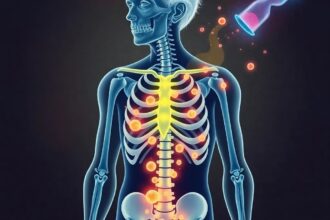Explore the science and benefits of photobiomodulation (PBM), a light therapy that enhances cellular function, reduces inflammation, and improves cognitive health.
Photobiomodulation (PBM) uses specific light wavelengths to boost cellular repair and cognitive function, offering a non-invasive solution for recovery and mental clarity.
Introduction to Photobiomodulation
Photobiomodulation (PBM), also known as low-level laser therapy (LLLT), is a therapeutic technique that uses specific wavelengths of light to stimulate cellular function. This non-invasive treatment has gained attention for its potential to enhance recovery and improve mental clarity. According to a study published in the Journal of Biophotonics
, PBM can significantly increase ATP production, reduce inflammation, and promote cellular repair.
The Science Behind PBM
PBM works by targeting the mitochondria, the powerhouse of the cell, with specific wavelengths of light, typically in the red and near-infrared spectrum. This light energy is absorbed by cytochrome c oxidase, a key enzyme in the mitochondrial respiratory chain, leading to increased ATP production. Dr. Michael Hamblin, a leading researcher in the field, stated in a press release from Harvard Medical School, PBM has the potential to revolutionize the way we approach cellular health and recovery.
Clinical Applications of PBM
PBM has been used in various clinical settings to treat conditions such as chronic pain, wound healing, and neurodegenerative diseases. A 2020 study in the Journal of Clinical Medicine
highlighted its effectiveness in reducing inflammation and accelerating tissue repair. Additionally, PBM has shown promise in improving cognitive function, particularly in patients with traumatic brain injury (TBI).
Incorporating PBM into Daily Life
With the availability of at-home PBM devices, individuals can now incorporate this therapy into their daily routines. These devices, which emit the same wavelengths used in clinical settings, can be used to target specific areas of the body or the brain. However, it is essential to follow guidelines and consult with a healthcare professional to ensure safe and effective use.
Potential Risks and Contraindications
While PBM is generally considered safe, there are some potential risks and contraindications. Overexposure to light can lead to tissue damage, and certain conditions, such as photosensitivity disorders, may contraindicate its use. It is crucial to consult with a healthcare provider before starting PBM therapy.
Conclusion
Photobiomodulation offers a promising, non-invasive approach to enhancing recovery and mental clarity. By understanding the science behind PBM and its clinical applications, individuals can make informed decisions about incorporating this therapy into their health regimen. As research continues to evolve, PBM may become a cornerstone in the future of cellular health and wellness.




